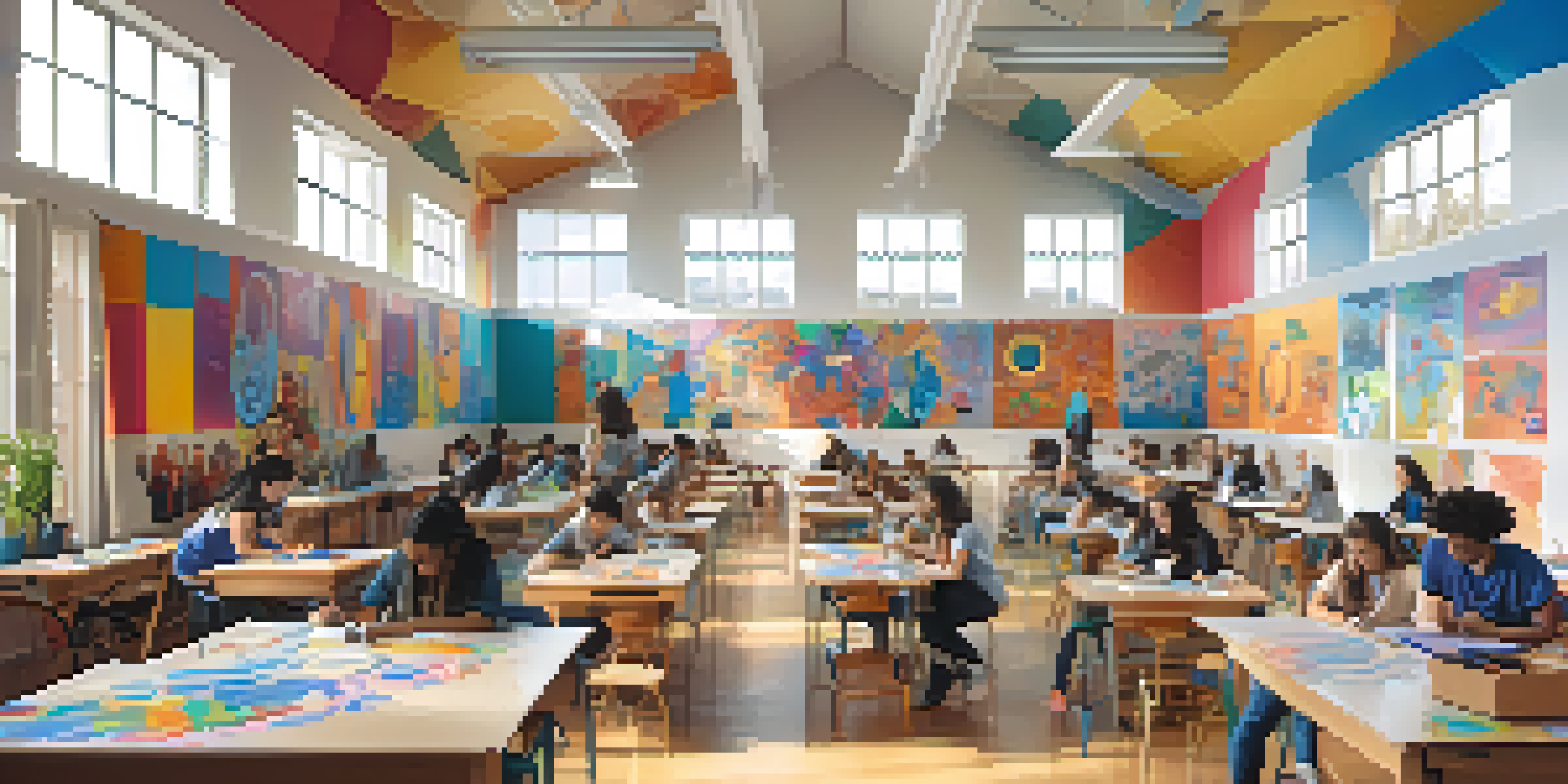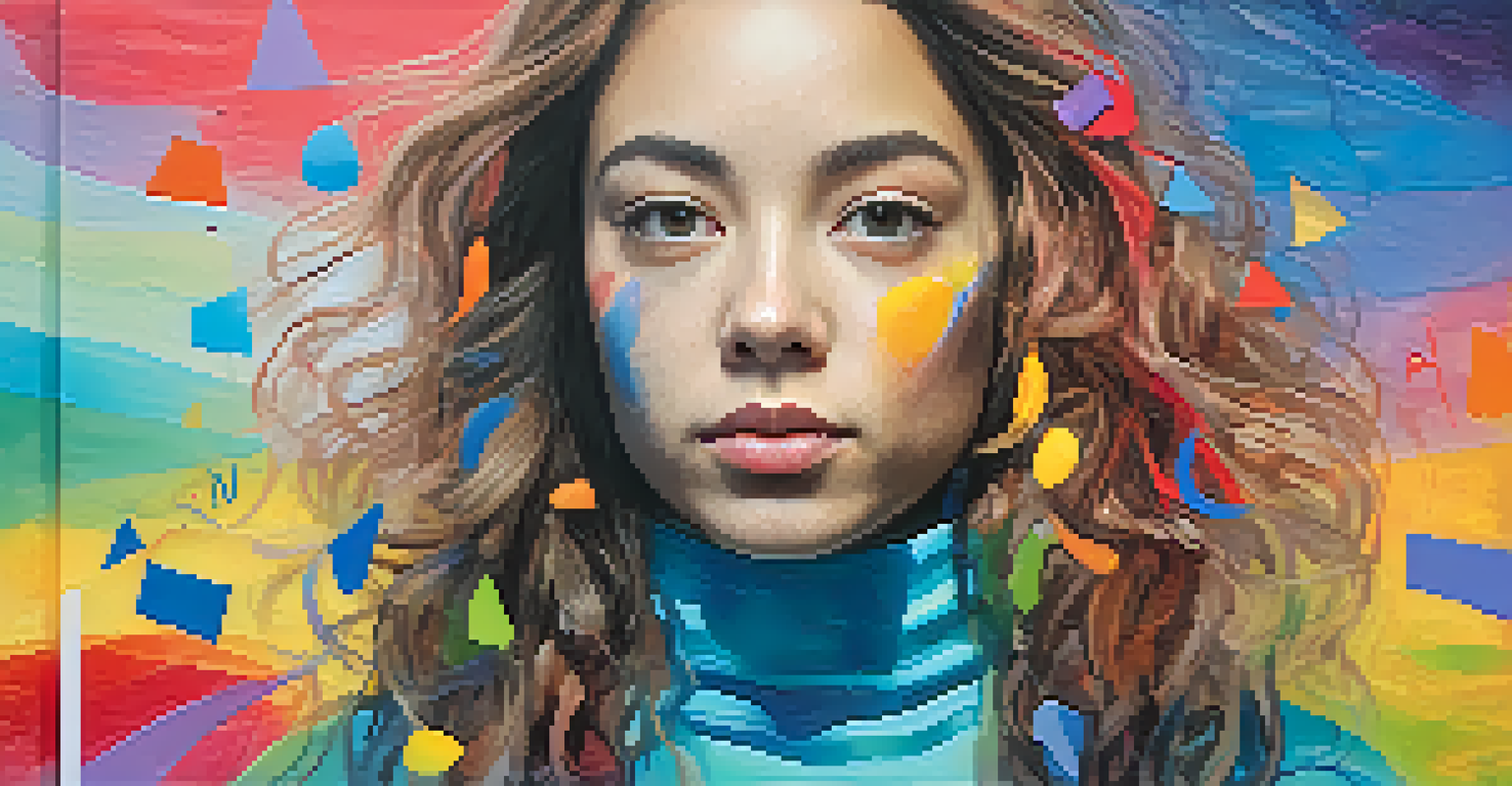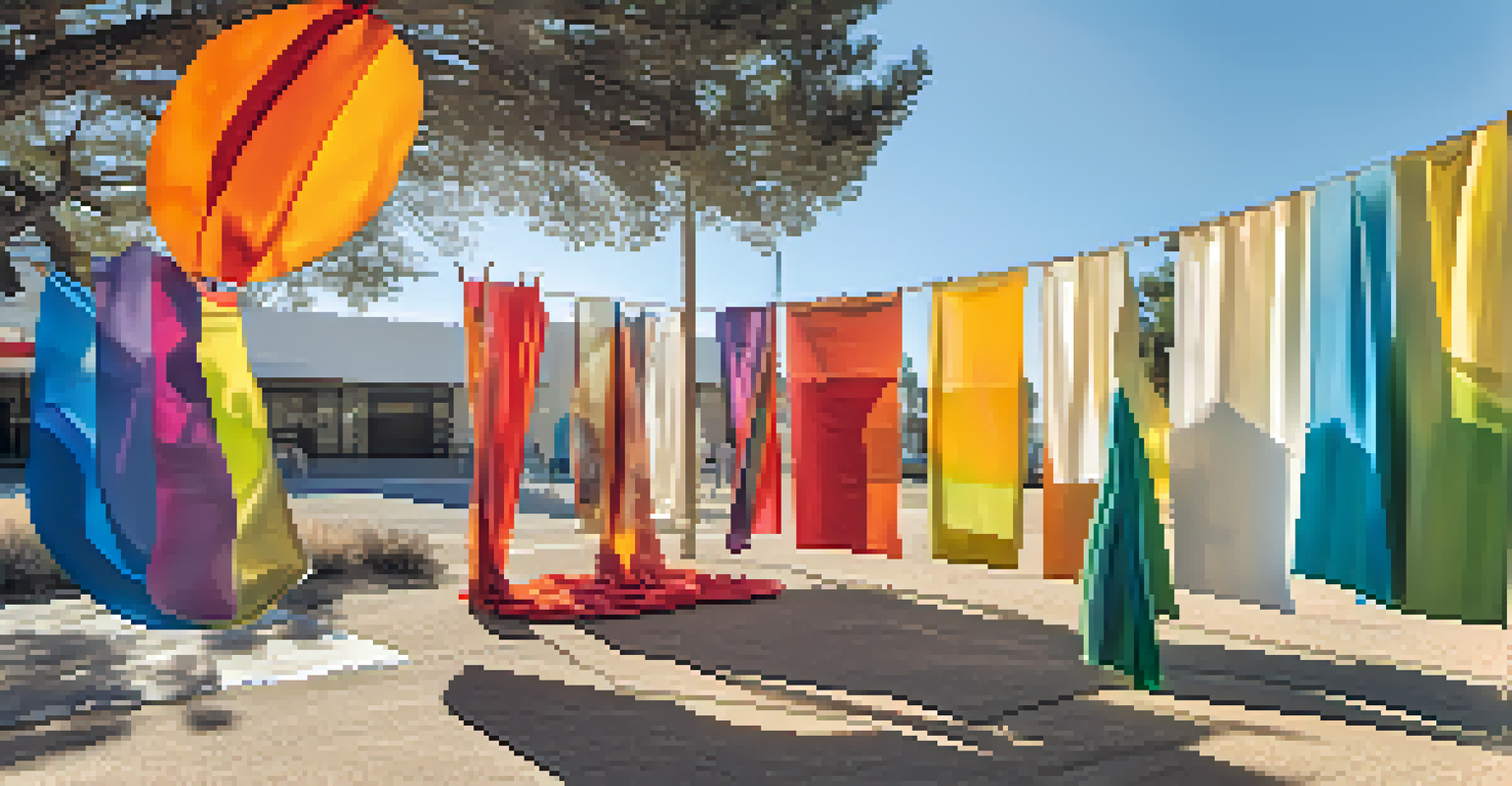The Impact of Art Education on Gender Identity Understanding

Understanding Gender Identity Through Artistic Expression
Art has long been a medium for individuals to express their thoughts and feelings, including complex aspects of gender identity. When students engage in art education, they often explore their own identities and those of others, creating a safe space for self-exploration. This artistic expression allows for the visualization of gender concepts, helping students understand diverse experiences beyond their own.
Art is a way of recognizing ourselves, and it can be a powerful tool for change in how we perceive identity.
For instance, a student creating a self-portrait may choose colors, shapes, and styles that resonate with their feelings about gender. This process can lead to profound insights, sparking conversations about identity and representation. Such projects encourage students to reflect critically on societal norms and challenge traditional notions of gender.
By integrating discussions about gender into art projects, educators can facilitate deeper understanding and empathy among students. This exploration not only fosters acceptance but also promotes a sense of community where varied identities are recognized and celebrated.
The Role of Art Education in Building Empathy
Art education provides a unique platform for students to engage with diverse perspectives, particularly regarding gender identity. Through collaborative projects, students learn to appreciate different viewpoints and experiences, fostering empathy. This is crucial, as understanding and accepting gender diversity can combat stereotypes and prejudices that often arise from ignorance.

For example, group art installations that address themes of gender can lead to impactful discussions among peers. As students work together to convey their ideas, they learn to listen and respect one another's interpretations of gender. This collaborative process encourages a culture of inclusivity and mutual respect.
Art Enhances Gender Understanding
Art education enables students to explore and visualize diverse gender identities, fostering empathy and acceptance.
Moreover, engaging with artworks that depict various gender identities can challenge preconceived notions and inspire students to think critically about their beliefs. By reflecting on these artworks, students can develop a more nuanced understanding of gender, ultimately leading to a more empathetic school environment.
Art as a Tool for Challenging Gender Stereotypes
Art education empowers students to challenge traditional gender stereotypes through creative expression. By encouraging them to create works that defy societal expectations, students can confront and critique these stereotypes head-on. This process not only promotes self-awareness but also encourages critical thinking about widely accepted norms.
The role of art is not a rarified one. It is that of a catalyst for social change.
For instance, a project that invites students to depict non-traditional gender roles can inspire discussions about the fluidity of gender identity. Students might create artworks that showcase individuals breaking away from conventional roles, which can spark transformative conversations in the classroom. This engagement cultivates a space where questioning norms is not only accepted but encouraged.
As students explore and challenge these stereotypes through art, they contribute to a broader cultural shift towards acceptance and understanding. This hands-on approach helps dismantle harmful narratives, paving the way for a more inclusive society.
Fostering Individual Identity and Self-Expression
Art education allows students to explore their individual identities, including their gender identity, in a supportive environment. When students are given the freedom to express themselves artistically, they often uncover hidden aspects of their identity. This exploration can be a powerful catalyst for personal growth and self-acceptance.
For example, through mediums like painting, sculpture, or digital art, students can create pieces that reflect their unique experiences with gender. This process not only deepens their understanding of themselves but also encourages others to appreciate diversity in gender expression. Art becomes a personal narrative, a way to tell their stories to the world.
Challenging Stereotypes Through Art
Creative projects empower students to confront and critique traditional gender stereotypes, encouraging critical thinking.
Moreover, the confidence gained from sharing their art can empower students to embrace their identities more fully. This newfound self-assuredness can lead to greater advocacy for gender equality and acceptance, both within the school and the larger community.
Creating Safe Spaces for Gender Conversation
Art education can create safe spaces for dialogues around gender identity, fostering an environment where students feel comfortable sharing their thoughts. When educators prioritize inclusivity in their art curriculum, they set the stage for meaningful discussions about gender. These conversations can help dismantle stigma and promote understanding among students.
For instance, art classes that incorporate themes of gender identity encourage students to express their views and experiences openly. This not only validates their feelings but also allows peers to learn from one another's perspectives. As students engage in these discussions, they cultivate a sense of belonging and support.
Creating a safe space where gender identity can be explored through art can lead to transformative experiences for all students. It empowers them to engage in discussions that might otherwise remain unspoken, fostering a culture of openness and acceptance.
The Impact of Diverse Artistic Influences
Diverse artistic influences play a significant role in shaping students' understanding of gender identity. When students are exposed to artworks from various cultures and perspectives, they gain insights into how different societies perceive and express gender. This exposure broadens their horizons and encourages a more inclusive understanding of identity.
For example, studying artists from different backgrounds who challenge gender norms can inspire students to think critically about their own beliefs. This can lead to meaningful discussions about how culture, history, and personal experiences intersect with gender identity. Such dialogues can empower students to embrace a more global perspective on gender.
Creating Safe Spaces for Dialogue
Inclusive art classes provide a supportive environment for open discussions about gender identity, promoting understanding.
Additionally, incorporating diverse artistic voices into the curriculum helps students realize that gender identity is not a one-size-fits-all concept. This understanding can foster a greater appreciation for the complexities of gender and encourage students to advocate for inclusivity in their own communities.
Long-Term Benefits of Art Education on Gender Awareness
The long-term benefits of art education on gender awareness extend far beyond the classroom. By engaging in artistic exploration, students develop critical thinking skills and a deeper understanding of identity that can shape their future interactions. These experiences can lead to a more accepting and inclusive society as they carry these lessons into adulthood.
For instance, individuals who have engaged with art education often become advocates for social change, using their creativity to challenge gender norms and promote equality. As they grow, these individuals may influence their communities, encouraging a ripple effect of awareness and acceptance.

Ultimately, the impact of art education on gender identity understanding contributes to building a world where diversity is celebrated. By nurturing these discussions in schools, we lay the groundwork for future generations to thrive in environments that value empathy, respect, and inclusivity.